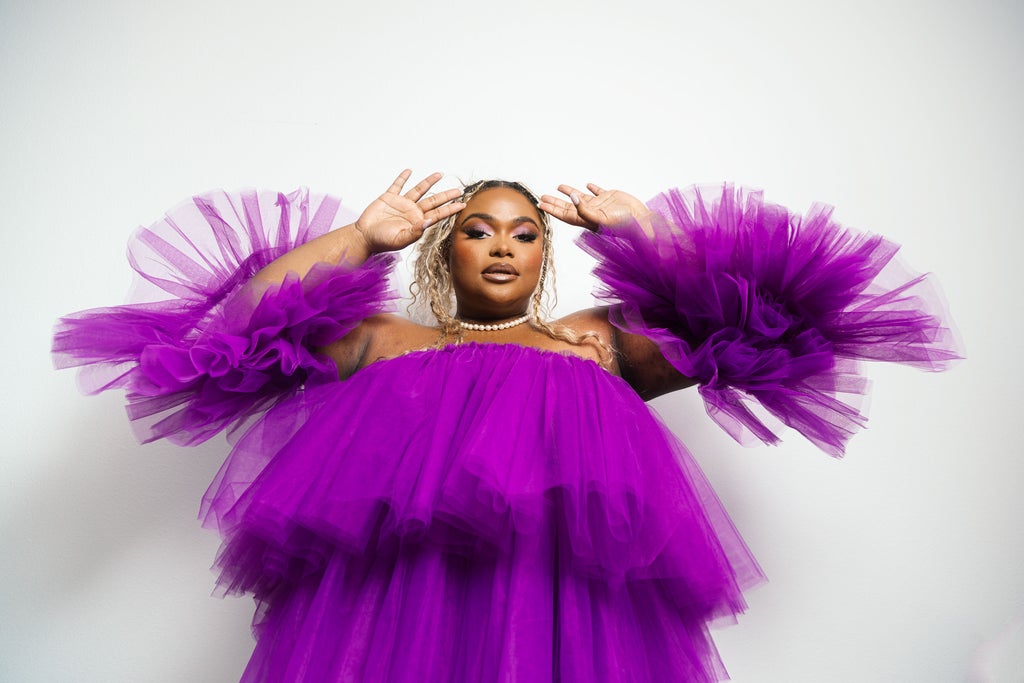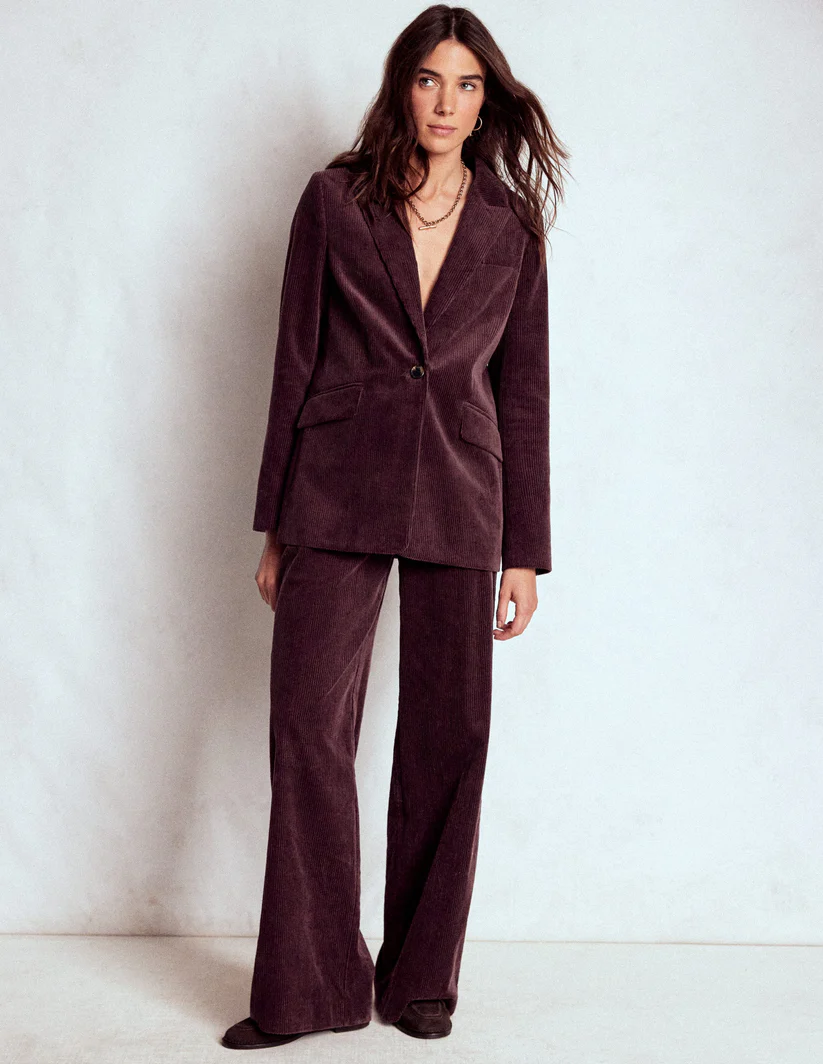

Samyra has a message for all fashion brands: “If you want plus sizes to sell, why you keep making them ugly as hell?”
This lyric from the singer-content creator’s popular-on-TikTok “Plus-Size Freestyle” single — which she self-released in January — captures an age-old question posed by those in the size-inclusivity movement: Why does “big back b*tch” clothing, as her song puts it, continue to suck?
Samyra (@samyra) is one of the most prominent Gen Z voices using their social media savvy to push for fashion’s size-inclusive future during a time when progress seems not only to have halted but reversed. In March, a report by Vogue Business found that 99.5% of the models on the autumn/winter runways in New York, London, Milan and Paris were “straight size.” Even worse, the publication defined the term much more narrowly than typical: US sizes 0 to 4.
While luxury fashion houses continue to face scrutiny over their casting, the everyday challenge for plus-size shoppers — 67% of women nationally — comes from the staple brands that fill malls across the country, where the majority of people shop.
That is precisely where Samyra has aimed her attention, garnering a TikTok following of over 1.8 million people. Her audience looks to her to learn where they can shop and, more importantly, if the retail brands that claim inclusivity are truly following through on their promises. She regularly creates first-person vlogs that chronicle her search for plus sizes in top stores, describing the options available, what’s stocked in store versus online, how welcoming the overall experience feels, and more.
“These are spaces where you’re not welcome, but you want to be let in the door,” Samyra tells Refinery29 about brands that aren’t (yet) size-inclusive. “[Growing up], while everyone was shopping at Justice, I was shopping at JCPenney. And so I want these clothing brands to know that they are responsible for many, many deeply rooted insecurities in people.”
To Samyra, combining her R&B and soulful music with plus-size advocacy felt like the perfect mash-up to get her message across. That desire to mesh the two is what brought “Plus-Size Freestyle” to fruition.

Samyra’s formal vocal training began when she was 10 and was inspired by the rich and soulful sounds that filled her hometown of New Orleans. From there, she participated in high-school opera competitions, dabbled in musical theater and got into college a capella — “I definitely had my little Pitch Perfect moment there, which was fun,” she recalls. Music continued to play a central role into her adulthood.
The young artist went on to study sociology at Harvard, graduating in May 2022. While there, her dream of becoming a recording artist began to meet reality when her single “Freak Witchu” — created as part of a class project — gained traction on TikTok. At the same time, Samyra’s exuberant, passion-driven personality was also quickly garnering attention on the app, especially her bold and well-researched takes around the state of body positivity and plus-size fashion.
In her most viral videos, she visited popular stores like Forever 21 and Old Navy, and detailed the shopping experiences from a plus-size perspective: Where were the plus sizes stocked, if carried at all? Was the selection vast or limited? Were size-diverse mannequins used? All these questions fed into her videos, and eventually into “Plus-Size Freestyle.”
“That first to go viral — I quite literally just propped the phone up and started ranting,” she explains. “I had opened up Instagram and saw a brand had just dropped a new collection, and I was frustrated.”
@samyra 🗣️PLUS-SIZE FREESTYLE OUT NOW!! We bouta BABOP all through the fashion industry!! Get your shopping bags y’all🤭🛍️ ✨Gold set and gloves from @ELOQUII ♬ Plus-Size Freestyle – Samyra
Samyra explains that using her art as activism is “a great way to not only get people’s attention but get them to truly understand it. I can get up and give a speech but I do think there is a way people are more willing to accept art as a way to understand things that they may not usually look at or agree with.”
Since the song’s release on streaming platforms earlier this year, Samyra has seen a big uptick in conversation from her engaged followers. But the brands she’s calling out in the tune have been “radio silent.”
One line in the song that has struck a chord with listeners is “If you ain’t got at least a 4X, you ain’t trying,” addressing a hot topic within the plus-size community of what is and isn’t considered “size-inclusive.” Samyra feels the weight of this personally: She can’t collaborate with many of the brands that tout size-acceptance messages, since their “inclusive” lines often do not exceed an XXL.
“I typically do not fit in the current range of what brands are calling their plus sizes,” she says. “A brand will have to want to make clothes for people my size and larger — and I would love to work with these brands, but I can’t fit the clothes.”
Samyra also feels that brands have lessened their size-inclusivity efforts over the past few years. As Ozempic-fueled views have taken over the cultural conversation, designers have seemingly abandoned their short-lived body diversity efforts, returning to the “thin ideal” of the early 2000s. All of this has only encouraged Samyra to continue being vocal with her activism, leveraging her platform and her music to do so. But she knows that achieving real change in the fashion industry won’t be easy. And she can’t do it all alone.
“Fat people can’t be the only ones attempting to have those conversations,” she says. “We are back in a time where thinness is more celebrated, as is the proximity to thinness, so brands have had and will have selective listening. And so it’s going to take more than just fat people to see that change.”
I want these clothing brands to know that they are responsible for many, many deeply rooted insecurities in people.
It’s essential even for people who don’t have this lived experience to speak up about the importance of size inclusivity, she adds. This could mean raising a conversation with your family, for example, or with executives in a boardroom.
The closing to Samyra’s “Plus-Size Freestyle” puts it best: “Can we please get some plus-size mannequins, ASAP? Can we also get some models online that are above a size 16? Me personally, I cannot look at a size 8 and determine if I could wear the 24. And stop calling yourself inclusive if you stop at a 3X. Goodnight, everybody! Babop!”
Like what you see? How about some more R29 goodness, right here?




